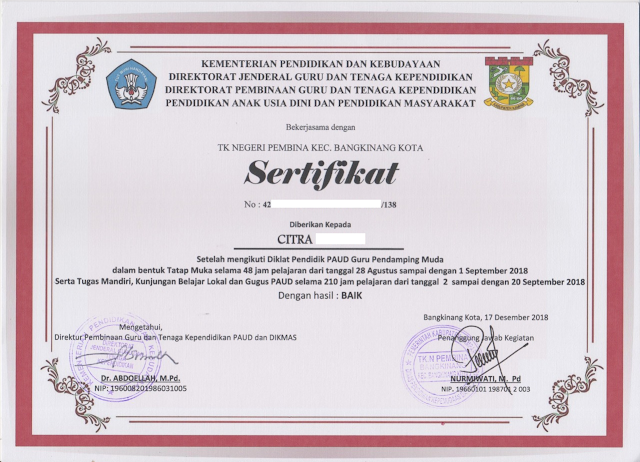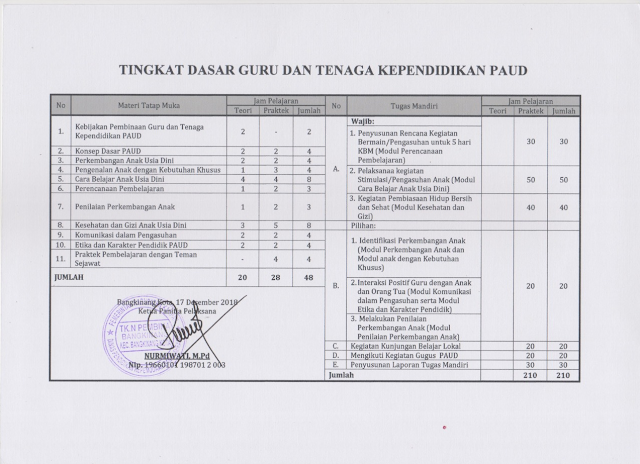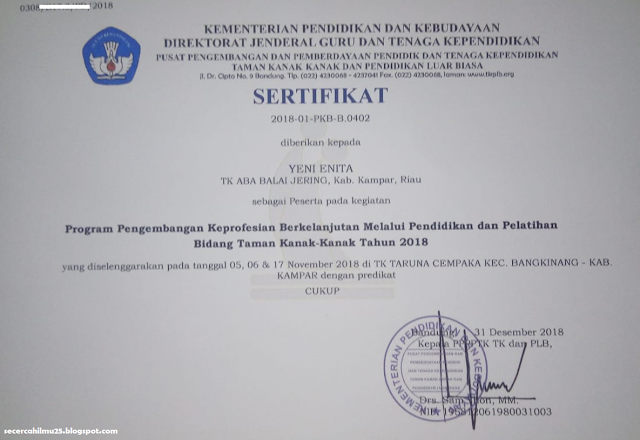Salam semangat buat seluruh Pendidik dan Tenaga Kependidikan. Setelah di postingan sebelumnya kita membahas tentang Jenis Sertifikat Kompetensi Pendidik atau Kepala Satuan PAUD untuk Unggah di SISPENA 2.0. Selanjutnya, dipostingan ini admin akan menjelaskan tentang Bagaimana Caranya Beberapa Sertifikat yang di miliki Pendidik atau Tenaga Kependidik digabungkan menjadi satu file dengan ukuran maksimum 2MB sehingga berhasil di unggah pada tombol Unggah File Sertifikat Kompetensi Pendidik.
Baca Disini : Jenis Sertifikat Kompetensi Pendidik atau Kepala Satuan PAUD untuk Unggah di SISPENA 2.0
Untuk informasi selengkapnya, silahkan simak informasi berikut ini samapai tuntas.
Cara Menggaungkan Beberapa Sertifikat Kompetensi Pendidik atau Tenaga Kependidikan PAUD sehingga Menjadi Satu File dalam Format .PDF.
1. Silahkan persiapkan terlebih dahulu Sertifikat - sertifikat Pendidik/Tenaga Kependidikan, untuk kemudian di scan.
Setelah beberapa file sertifikat di scan seperti gambar dibawah ini. Selanjutnya, kita masuk ke langkah ke dua.
2. Langkah ke dua memulai untuk menggabungkan beberapa scan Sertifikat Kompetensi menggunakan aplikasi Microsoft Word.
Silahkan buka aplikasi Microsoft Word di PC/Laptop rekan masing-masing.
3. Insert atau memasukkan Hasil Scan Sertifikat tadi di laman Microsoft Word. Caranya, silahkan klik pada Tab Menu Insert > Picture.
Masuk di halaman Insert Picture, silahkan klik file yang akan dimasukkan selanjutnya klik pata tombol Insert.
Hasilnya seperti gambar dibawah ini, beberapa scan sertifikat kompetensi pendidik telah berhasil di masukkan pada laman Word untuk selanjutnya dijadikan satu file dalam format .pdf dengan ukuran file maksimum 2MB.
4. Selanjutnya, silahkan klik pada Tab Menu File > Save As untuk memulai menyimpan file.
Masuk di halaman Save As, silahkan ganti File name.
Begitu juga dengan Save As Type, silahkan ganti ke dalam format PDF.
Jangan lupa memilih Standar (Publishing online and printing) pada Optimize For untuk mendapatkan hasil yang baik. Selanjutnya klik pada tombol Save.
File telah berhasil disimpan dalam format PDF.
5. Selanjutnya, masuk ke tahapan Pengecekan Ukuran File serta Pengunggahan File di SISPENA 2.0
Untuk cek ukuran file, caranya silahkan klik kanan pada file yang telah disimpan dalam format PDF tadi. Lalu pilih Properties, masuk di halaman properties silahkan cek pada Size and Size on Disk.
Alhamdulillah ukuran file dibawah 2MB. Selanjutnya, kita tinggah unggah file sertifikat kompetensi pendidik.
Silahkan masuk di SISPENA 2.0 > Persyaratan > Input Persyaratan > Syarat Khusus > Sertifikat Kompetensi Pendidik > Browse.
Silahkan pilih file tadi, lalu klik Open.
Dokumen telah berhasil diunggah. Demikianlah informasi yang dapat admin bagikan semoga bermanfaat buat rekan semuanya. salam semangat dan salam satu data.




































